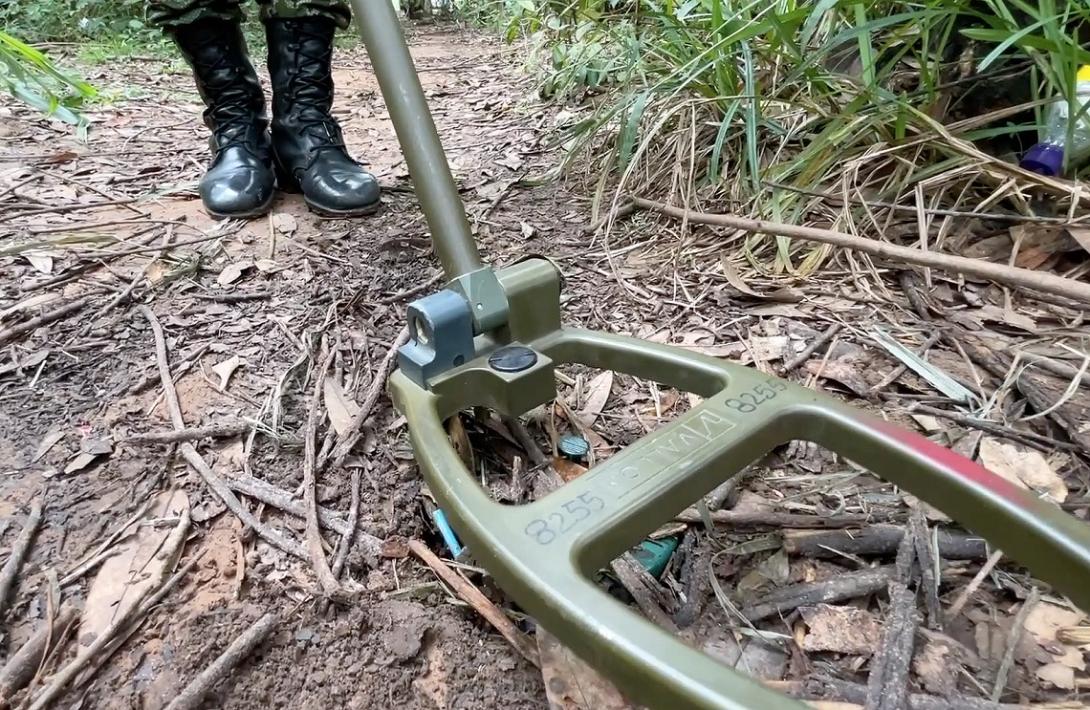The cost of making an explosive device by illegal armed groups is USD$2 (about 9,000 or 12,000 COP), while equipping an anti-explosive group to search, find, neutralize and destroy an explosive device is more than a billion pesos.
In the last 20 years, 8,115 military have been hit by explosive devices and anti-personnel mines. Between 2007 and 2022, 2,557 civilians have been also hit.
The anti-personnel mine is activated by the victim, while the improvised explosive device is activated by a victimizer who is with cover and protection, waiting for the troop transit to start the explosive.
With the premise one mistake is the last, the members of the National Army's anti-explosive groups have destroyed 7,400 explosive devices throughout the country, during 2022, which means that, on average, more than 20 devices a day neutralized.
These brave anti explosives expert, characterized by their nerves of steel and high precision, are part of the nine Marte Groups (Explosive Ordnance Handling); 900 EXDE teams (Explosives and Demining), and 25 EXDE - Delta teams, equipped with electronic measures, of the National Center against Improvised Explosive Devices and Mines, CENAM, to face mines and explosives.
Each of them, with a specific mission, are trained to neutralize, search for and destroy explosive devices planted by armed groups outlaw; the Marte groups are in all divisions of the country's Army, are in charge of the most complex explosive devices; the EXDE, accompany all military operations on the ground, and the EXDE – Delta, protect critical State constructions.
Regarding this work, Lieutenant Colonel Yerson Rincón, director of CENAM, assures that the mission of his men is focused on protecting, preventing and foreseeing, to “win the war against explosive devices.”
“The mission of an EXDE team, is one of the most vital, is to protect our colleagues, and incidentally, it works to improve the transit and mobility of civilians. It is a soldier who 24/7 is exposing his chest, risking his life to face that explosive device planted by those organizations outlaw; he is analyzing, verifying and working to improve the mobility of units and the mobility of civilians,” says the director.
This is how, since 2001, when the Ottawa treaty entered into force in Colombia, the Military Forces acquired the great commitment to fight against mines, planted in the fields, many of them with electronic and chemical components, whose purpose is to cause as much damage as possible to the peasants and the members of the Military Forces.
Among these highly trained members of the Military Forces is Lieutenant Colonel Leonardo Fonseca, today director of Military Demining, who, with more than 15 years of experience in handling explosives, says that his greatest satisfaction is “making a difference, doing something to save lives, either directly in the area of operations or strategically.”
With all the expertise at the time of neutralizing devices, but in the same way with the experience when telling the story in detail, Colonel Fonseca, assents that, in 2010, even after implementing the techniques, tactics and procedures, the thousand victims of the National Army were surpassed, including wounded and killed.
“Many of them lost both legs, their hands, with indescribable beatings, many dead of whom we could not even recover a single piece of their body,” Fonseca describes.
An EXDE team is made up of 5 men: the commanding non-commissioned officer, two detectorists; an operator of the Ecaex (Explosive Ordnance Equipment), and a trained dog, with a specimen of the labrador or Belgian shepherd malinois.
They are millimeter procedures, which each of them has tattooed in memory: the commander analyzes the threat in a 180-degree cone, verifies that there is no trip wire or something that is not in accordance with the vegetation; perimeter security is established; the personnel area is evacuated; the operator uses the Ecaex in different places; the dog is sent; the metal detectorist approaches and, finally, the device is destroyed.
This is described by Captain Jhon Jiménez, commander of the company of Explosive Ordnance in charge of Engineers, who, with 30 years and 14 years of experience working in the departments of Meta, Guaviare, Vaupés, Putumayo, Antioquia and Cundinamarca, adds that anti-personnel mines are a “perfect enemy”. “This enemy becomes a silent enemy, because it doesn't eat, it doesn't sleep, it's always there, we never see it and at any moment we can activate it.”
Since 2003 to date, the National Army has neutralized the threat of 289,186 explosive devices, whose production ranges from 9,000 to 12,000 pesos, made in multiple ways, ranging from milk jars to equine specimens which individuals condition with explosives, where they simply need a container, switch, energy source, initiator, metal intensifier and a main charge.
Source: Defense Sector Communications Office - Ministry of National Defense





